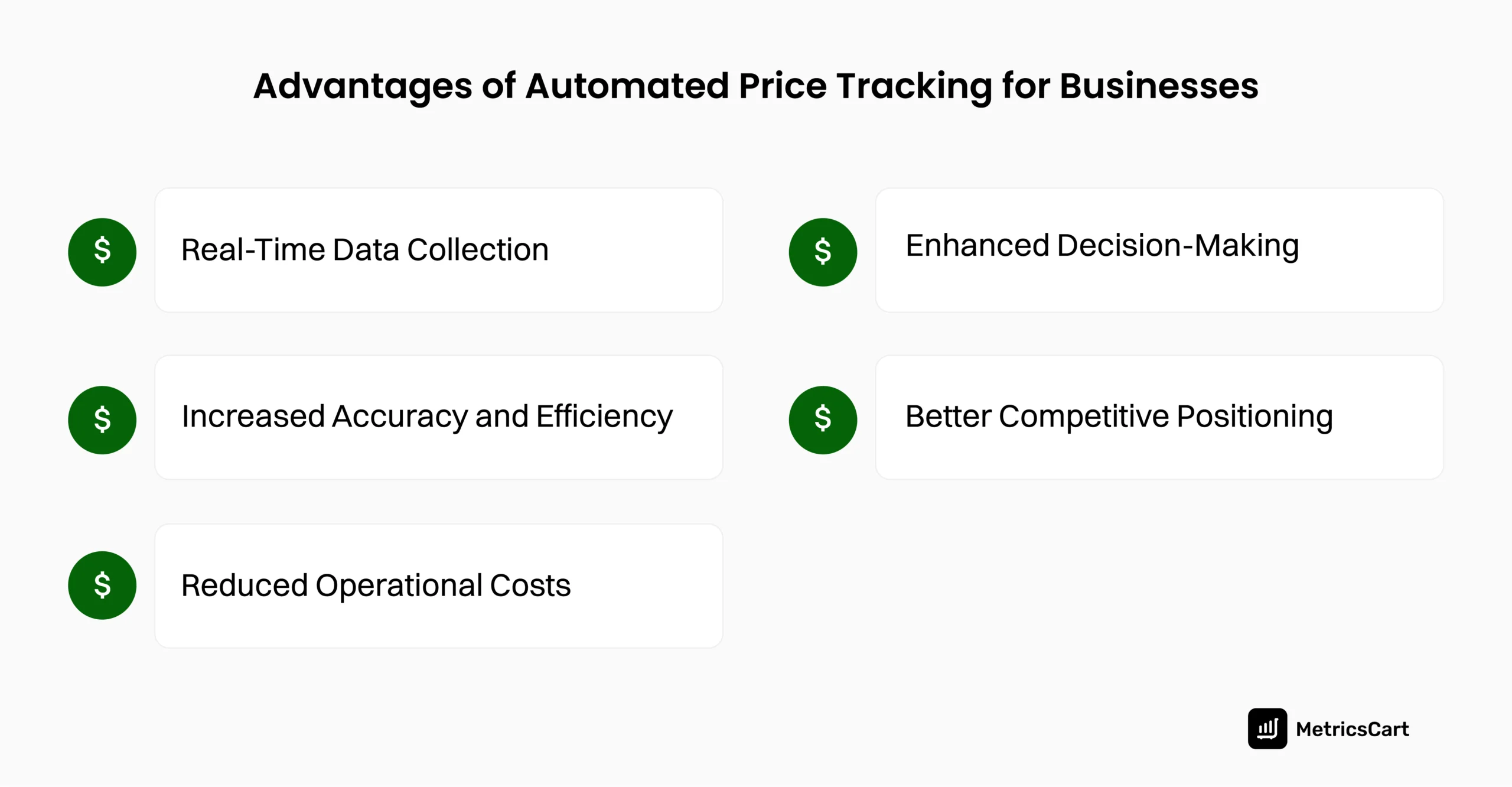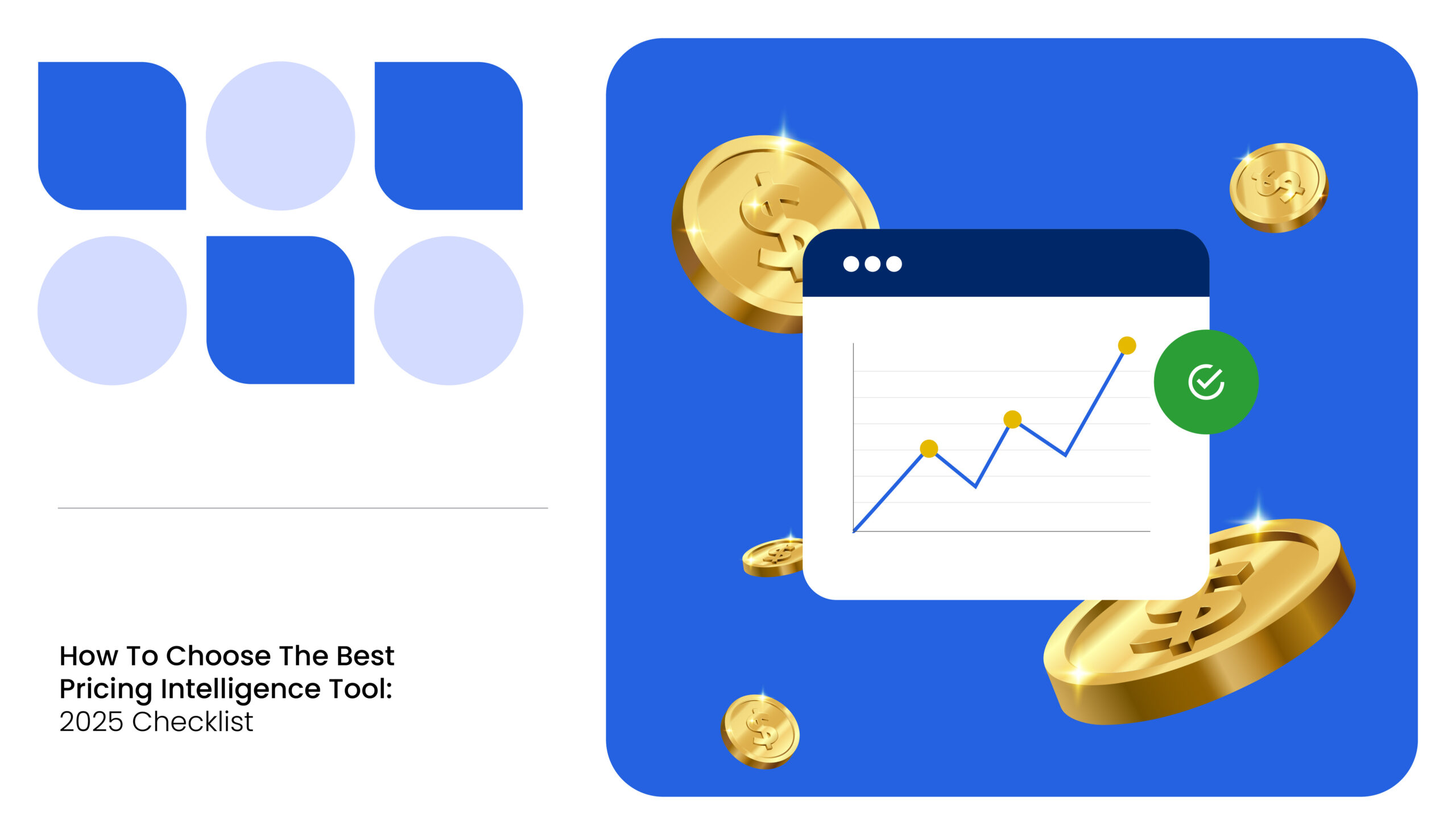Imagine this: Your customers are out there scrolling, clicking, and comparing prices across dozens of brands without breaking a sweat. They want the best deal, and they want it now. In a market where prices can change by the hour, if you’re not keeping up, you’re falling behind.
However, manually tracking product pricing tends to be daunting, especially across platforms, regions, and competitors.
This is where automated price monitoring steps in. Unlike manual tracking, which can be slow and prone to errors, automated price monitoring enables businesses to maintain a competitive edge through real-time insights.
What is Automated Price Monitoring?
Automated price monitoring refers to using technology to track and analyze product prices across e-commerce platforms. It helps brands collect data on product pricing, discounts, and promotional offers without manual intervention.
With an automated system, businesses can access real-time pricing information across multiple channels, allowing for faster and more accurate strategic decisions.
Manual vs. Automated Price Monitoring
Traditionally, price monitoring involves a manual process where a team checks competitor websites, gathers price information, and documents it on an Excel spreadsheet to ensure that information is in a single place. However, manual tracking can be tedious, error-prone, and limited in scope.
By contrast, automated tracking leverages software tools to collect and analyze price data efficiently, providing a more comprehensive and current view of market trends. This technological approach offers enhanced speed, scalability, and accuracy.
Moreover, it reduces the time a manual team has to spend tracking competitors. In turn, they have more time to focus on business strategy and pricing.
Benefits of Automated Price Monitoring

With smaller SKUs and limited product listings or presence in different channels, this may seem feasible, but when small businesses evolve, things get tricky. Here are some reasons why you should use automated price tracking for brands:
Real-Time Data Collection
With automated monitoring, brands can access real-time pricing data, which is essential in a rapidly changing market. It allows brands to respond quickly to competitor price changes, adjust their e-commerce pricing strategies, and stay competitive.
Increased Accuracy and Efficiency
Manual monitoring often results in missed updates or errors, especially when covering a broad range of competitors and regions. Automated systems reduce human error, increasing data accuracy and reliability.
Reduced Operational Costs
By automating data collection, businesses can reduce the labor costs associated with manual monitoring. These savings enable them to allocate resources more effectively and focus on other strategic areas.
Enhanced Decision-Making
Data collected through automated price monitoring tools is often displayed in easy-to-interpret dashboards, allowing brands to make informed decisions on promotional pricing, discount strategies, and inventory management.
Better Competitive Positioning
Automated price monitoring enables brands to maintain price parity or undercut competitors, helping them capture a larger share of the market. With access to competitor data, brands can proactively adjust their pricing strategies, which ultimately leads to stronger positioning and increased customer loyalty.
READ MORE | Want to Learn More about the Benefits of Price Monitoring? Check out Competitor Price Monitoring Solution for E-Commerce
How to Automate Price Monitoring?
Brands need automated price monitoring, especially during seasonal periods like Halloween and sales periods like Black Friday. Enlisted below are the steps you can follow to implement automated price tracking:
Conduct Competitor Analysis
The first step in automating price monitoring is conducting a thorough competitor analysis. It helps identify your main competitors and understand their pricing strategies. You can analyze the patterns in their pricing changes, promotional strategy, and discounts.
By understanding how competitors price their products, brands can identify trends and strategies that appeal to consumers and set benchmarks for their pricing.
Select the Products to Benchmark
Once you have identified your competitors, you need to select the products that have to be benchmarked for pricing. You can categorize products based on sales volume, margin, and market demand.
Not all products require the same level of monitoring. Thus, it is vital to prioritize high-impact products such as bestsellers, seasonal items, and those with volatile prices. Benchmarking ensures that these products have competitive pricing, enhancing customer acquisition and retention.
Leverage a Robust Pricing Monitoring Tool
While conducting the competitor analysis and setting benchmarks are the beginning, an automated price monitoring tool is vital for automating the entire process. An effective pricing tool like MetricsCart offers real-time tracking, customizable alerts, and integration with various e-commerce platforms.
MetricsCart price monitoring solution allows you to track both real-time and historical price changes of your product and category. It helps analyze your competitors’ pricing patterns and promotional offers. Moreover, it enables your team to focus more on strategic activities for the brand by removing them from the manual compilation of resource-intensive pricing data.
Thus, a robust automated price monitoring system can track price changes for your and your competitors’ products and categories and help make well-informed pricing decisions.

Conclusion
In e-commerce, brands that don’t actively monitor prices risk falling behind. Automated price monitoring offers a powerful solution to this challenge, allowing businesses to keep track of competitor prices, make informed pricing decisions, and maintain a competitive edge. By embracing tools like MetricsCart, brands can enhance operational efficiency, improve profit margins, and ensure long-term growth in the digital marketplace.
Want to Eliminate Manual Price Tracking?
FAQ
It reduces the time spent on manual data collection, allowing employees to focus on more strategic tasks while ensuring accurate and timely pricing information.
Absolutely. While large brands often rely on automated tools, small businesses can also benefit from competitive pricing insights, allowing them to stay relevant and responsive in the market.
Yes, many automated price monitoring solutions offer dynamic pricing features that adjust your prices based on competitor actions and market conditions.




